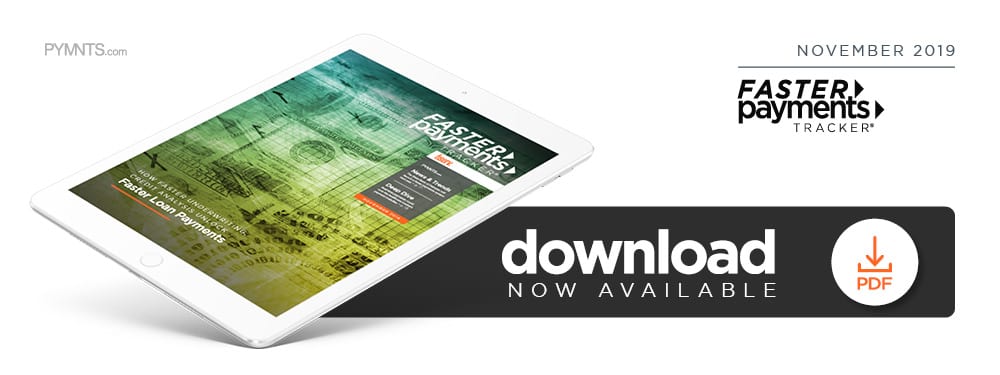Deep Dive: Giving Healthcare Payments A Real-Time Upgrade

The healthcare market is not immune to payment frictions, as costly inefficiencies can force hospitals to chase payments and prompt 47 percent of patients to consider seeking medical treatments elsewhere. The Faster Payments Tracker includes a Deep Dive that explores the potential benefits that real-time payments could offer patients and healthcare providers alike.
Customer-facing markets such as financial services and insurance have greatly benefited from real-time payments, and healthcare could be next. Frictions are rampant in the U.S. healthcare market, which is continuously at the center of debate regarding how to expand access and manage treatment costs. Real-time payments can address these pain points by granting claimants quicker access to funds and providing more precise data regarding insurance payments’ purposes. They also deliver more seamless experiences that consumers — and millennials in particular — have come to expect. The following Deep Dive highlights how real-time payments can disrupt and improve the healthcare industry.
A Prescription For More Efficient Payouts
The U.S. healthcare market saw a rise in high-deductible plans following the 2010 passage of the Affordable Care Act (ACA), shifting a greater share of out-of-pocket payments, such as deductibles and co-pays, onto patients. This unintended side effect of the ACA has caused $7.5 billion in unpaid medical expenses each year, according to PYMNTS’ research.
These payment issues only add to the healthcare market’s maladies, as a recent report found that 15 percent of healthcare spending is connected to billing and payment inefficiencies. The same report found that 47 percent of patients would consider seeking medical treatment at different hospitals with more efficient payment experiences.
However, there is evidence that players in the healthcare market are starting to understand how to use digital payment systems effectively. The market is seeing increased usage of automated clearing house (ACH) payments in particular, according to Nacha, which reported that more than 306.7 million ACH electronic funds transfer (EFT) payments were made from health plans to health providers in 2018 — an 11.5 percent increase from the previous year. This put the value of ACH-based healthcare payments at $1.59 trillion in 2018, an increase of 80 percent from 2014.
Real-time payments could address many healthcare payment ills by allowing providers to transfer funds immediately. They could also eliminate one of healthcare payments’ most common ailments: matching transactions to patient data.
Real-time payments could result in more efficient payment operations that improve payer-to-provider flows by quickly issuing disbursements from payers to healthcare providers. Electronic messaging standards, such as ISO 20022, could also repair healthcare’s reconciliation issues. Payments made using such standards could include information clarifying whether funds were used for surgeries, prescriptions or dental work, for example. They can also prevent staff from having to track down paper checks.
Faster healthcare transactions can also help patients more effectively manage their working capital. They could initiate healthcare payments directly from their bank accounts, granting them clearer visions of how much money they have available. Healthcare providers on the other end of transactions would thus receive payments faster and at lower costs because they would not incur fees as they do with more expensive methods, like credit cards.
The availability of faster payments can also result in speedier insurance claim payouts, helping patients cover medical expenses. Patients who immediately receive insurance claims in their bank accounts, as opposed to waiting days or weeks for checks to arrive in the mail, are more likely to be satisfied and remain with their current providers.
A Real-Time Payments Healthcare Overhaul
Significant barriers to real-time payment adoption remain, despite their potential benefits. The costs involved in implementing new services are among the top concerns for payment providers, of which 17 percent indicated they pay fees to use electronic payment systems. Many providers are also concerned about the potential return on investment (ROI). They worry that electronic systems would not positively affect revenue issues.
Recent data found that these troubles are ill-founded as these systems could save approximately $240 million for claim submissions. Automated real-time payments could also result in a potential $7.9 billion in savings for providers.
Real-time payments in the healthcare industry are on track to expand significantly in the coming years. Recent projections are indicating that real-time payment systems’ adoption will grow at a compound annual growth rate (CAGR) of 100 percent from 2018 to 2022 as consumers shift away from payment methods like credit cards, debit cards and ACH. Additionally, 25 percent of all online bill payments to providers and payers will be conducted using real-time payments. The debate over healthcare and how to improve payment flow is sure to continue for years to come, but real-time payments could be the immediate cure for what ails the market.

